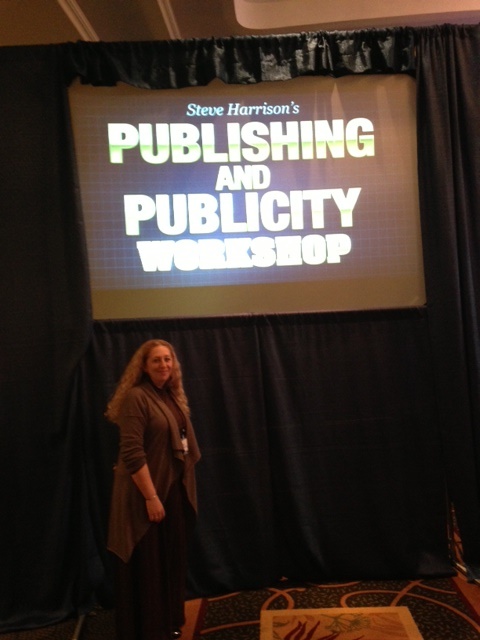The pressure was on now. She rose to speak, in a roomful of 50 strangers. This was just the practice; the true test would come tomorrow when she actually would meet with ten professionals in the publishing field. She would have three minutes to convince them that her book would be worth a second, more in-depth look to see if they could sell it to a publisher and the public.
The lives of women and children depend on her being able spread to a wide audience the words of her mission: to change the maternity care system to one that supports the needs of mothers and babies.
Her hand shook as she took the microphone and she tried to modulate her voice to sound confident, yet relaxed and friendly. She took a deep breath and began,
“Hello, my name is Michal Klau-Stevens. I am the President Emeritus of BirthNetwork National, a nonprofit with fifty chapters around the country, and I am an expert on citizen maternity care issues. The book I am writing is a business book geared towards anyone in business or government working on healthcare reform and corporate financing of healthcare. It is called “Million Dollar Babies: Controlling the Billion Dollar Business Costs of Maternity to Save Money and Lives.
Businesses pay for almost half the births in this country for a system that is costly and leads to some of the worst outcomes in the industrialized world. Obamacare is forcing coverage of maternity now, healthcare is bankrupting our country, and everyone is looking for solutions. The midwifery model of care is the billion dollar answer, and nobody is talking about it.
The reason I think this book will sell is because I am a leader in the movement to promote evidence-based maternity care and with my position, public speaking skills, and connections to national midwifery and birth related organizations I can reach at least half a million people in the birth community with my message, and I’m actively reaching out to the business community now too.
How does this sound to you?”
She looked up to the stage, where her guru, the seminar leader, was standing illuminated in the spotlight. “Very good,” he said. People in the room were applauding. Relief flooded into her body. At least now she knew she was on the playing field, not outside the ballpark. So much was riding on this day.
The next day she rose early, unable to sleep from the nervous excitement about the experience which lay ahead. She dressed in her best businesslike clothes, so different from the jeans and crocs that are her usual uniform as a work-from-home pregnancy coach and birth advocate. As she walked into the room full of people all jostling for the attention of the eight agents, one editor, and one hybrid publisher, she released her intention out to the universe. “Just do your best,” she whispered to herself.
In speed-dating form, she met with agent after agent. She had one minute to give her pitch, then two minutes to answer questions, give clarification, ask for and receive advice from experts in their field. Her first pitch, with her number one pick to publish her book, was less than thrilled with what she had to offer. “Maybe if you had a person in business or government writing with you it might work, but it’s not really our kind of book now.” A disappointment, to be sure, but she picked up her head and moved on.
Meeting after meeting she offered her pitch to the agents. Some of them felt that the market isn’t big enough, or her platform isn’t big enough, or they didn’t understand why she is writing a business book on a subject that only affects pregnant women. Sometimes her pitch was right on the mark, and other times, when she varied it to appeal to something the agent had said earlier in the day, it lost its punch or she wandered away from key points. Every interaction was a chance to learn something new about how to improve, to gain experience to be able to do this well.
Some of the agents understood right away what she was talking about, and saw potential in the market for a book with a new take on serious problem that our whole country is grappling with right now. Those meetings buzzed with energy.
In the end, she finished the day with three agents interested in reading her full book proposal to learn more about her work. It doesn’t mean the book will be published, but it is another step along the road in the right direction.
By evening, she felt the day had been a success. She hadn’t caught the big fish she dreamed about, but she wasn’t walking away empty-handed either. She had connected with people and was moving forward towards her goal of publishing a book in service to her mission. Over the course of the seminar, seven people had approached her to say they felt she is doing important work and she should continue to try to get her book published.
She realized that this is the work of an activist; serving her mission by taking action, stretching her boundaries, and taking personal risks. Speaking her truth, believing it will resonate with some, and accepting it will not resonate with all. Hoping that others who hear her message will want to share it. She showed up and did her best.

